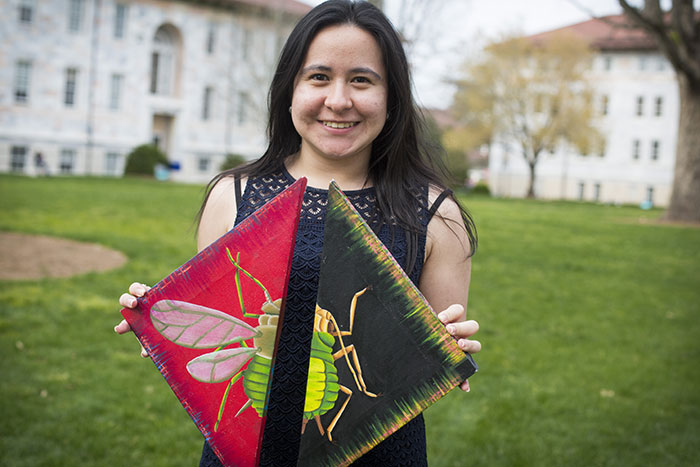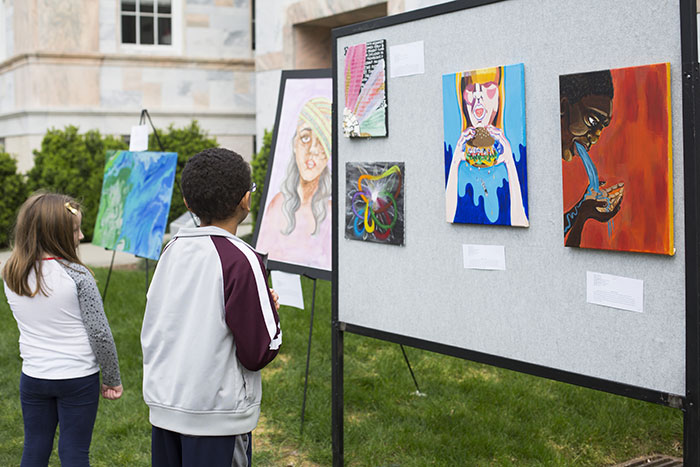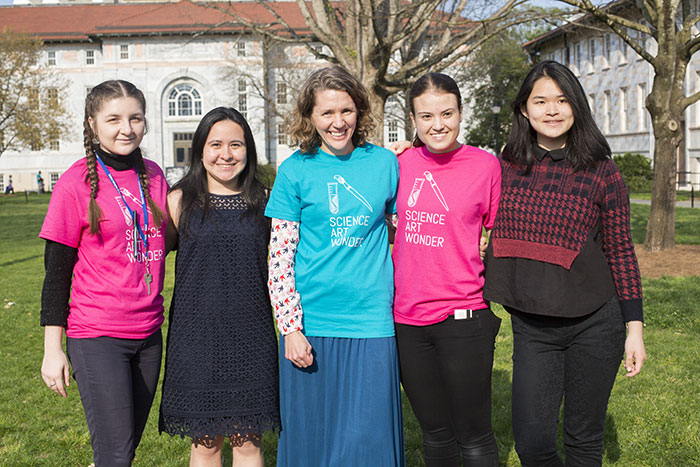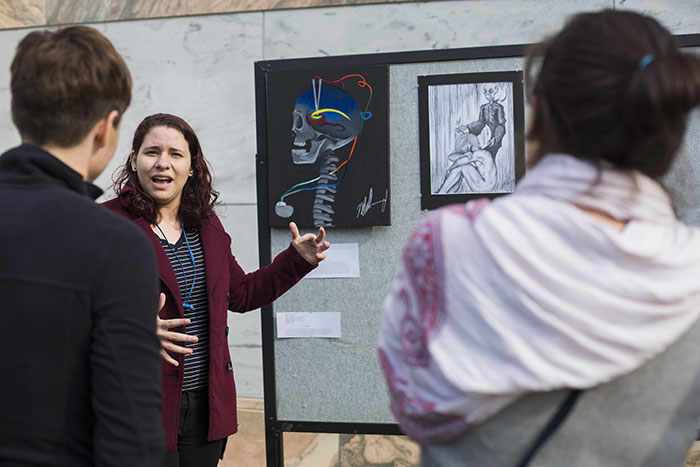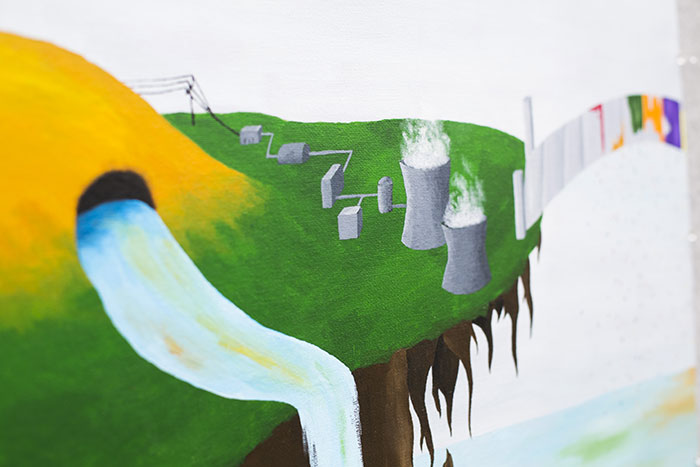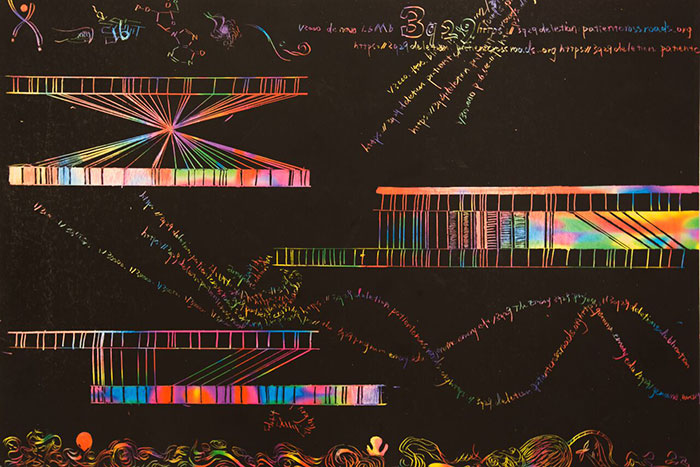A small crowd gathers in Emory’s White Hall before the menacing sight: Large rubber worms arrayed on triangular red spikes. The jagged spikes, from a few inches to more than a foot tall, lean crazily in all directions. Some of the worms — suspended on near-invisible fishing line — appear to rise off the spikes, escaping to a circular mirror hanging from above.
“This is how evolution works!” says Ethan Mock, a sophomore majoring in ancient history, who created the sculpture, titled "The Crucible." He looks dapper in a leather vest and tweed cap and speaks with theatrical flair to the crowd. “The spikes represent the trials and tribulations of the worms’ struggles. Most are trapped in the spikes but a few climb out, not realizing that they are simply climbing into a new trial, a new test.”
The onlookers include a mix of college students, children
Mock worked with the lab of Levi Morran, an assistant professor in Emory’s Department of Biology who studies co-evolutionary dynamics by experimenting with a host (a microscopic worm called C.
“This is so cool!” says Pareena Sharma, a first-year biochemistry major at Emory, as she snaps a photo of the sculpture. “It’s so relatable to me. I’ve been doing this same experiment since the first of the semester in Biology 142.”


